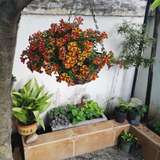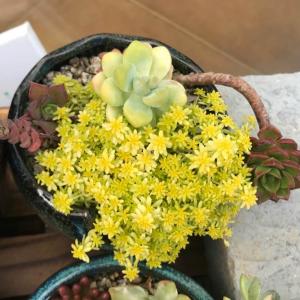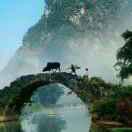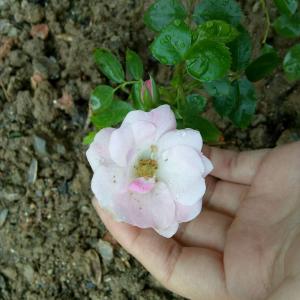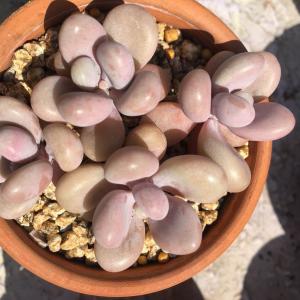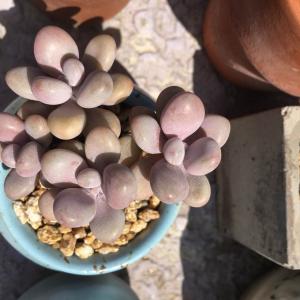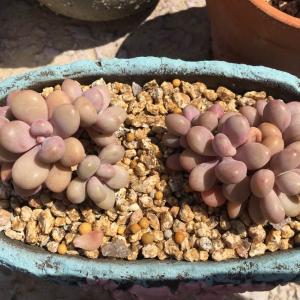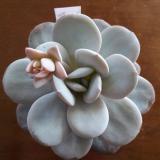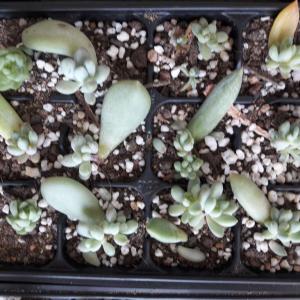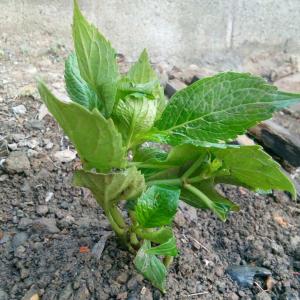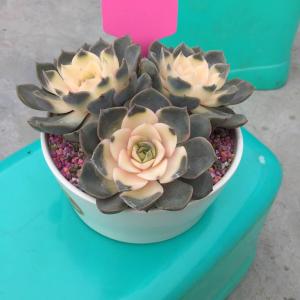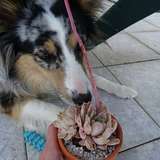文章
权问薇
2018年04月24日


1、土壤
选择适宜的盆土非常重要,它是一种喜酸性的植物,适宜的PH值在5至6之间,它非常怕碱性土,所以一定不能种植在碱性壤土中。花土的选择可用混有泥炭土、腐叶土、菜园土等的沙壤红土,忌用不含腐殖质的煤渣土等。

2、温度
适合它的生长温度是在16到18℃,总体来讲还是比较符合春天的平均温度的。但是若是过低或是被太阳直射,就会对它的生长造成一定伤害。所以如在初春,温度若是太低了,我们需要注意做好保暖措施。平时要将其放在通风好、阳光足的地方来养。
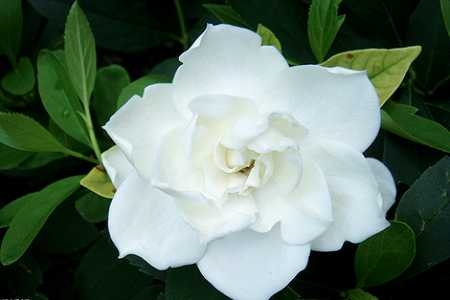
3、水分
对于它,水的控制要严。它较喜湿,但过度的潮湿会导致烂根,所以一定要合理浇水。浇水频率主要看壤土的干湿度,盆土一干就得浇水,在晚上可以用喷壶喷一下叶子,以增加湿度。
4、肥料
它是一种喜肥的植物,但又考虑到它须处于酸性花土中生长,所以每次施肥时要将少量的硫酸亚铁加到肥料中,发酵一会再施加肥料。到了春天的生长旺期,可以每隔半个月施一次肥,最好给肥料兑点水,避免浓度太高灼伤根部。

0
3
文章
Miss Chen
2018年04月24日

Description: This wildflower is an annual, biennial, or short-lived perennial about 3-6' tall; it branches occasionally in the upper half. The central stem is light green, stout, 4-angled, and densely covered with long spreading hairs. Along its length are pairs of opposite leaves up to 6" long and 2¼" across; they are lanceolate to ovate and coarsely serrated along their margins. The upper surface of each leaf is medium to dark green, shiny, hairless to slightly hairy, and wrinkled along the veins; its lower surface is light green and more hairy. The petioles of the leaves are up to 2" long. The central stem terminates in a panicle of floral spikes up to 2' long and half as much across; the upper side stems also terminate in such panicles, although they are smaller in size. Each panicle has narrow ascending branches (up to 6" long) and an airy appearance; sessile small flowers are sparsely distributed along each of these branches. Each flower is 1/8" (3 mm.) across, consisting of a white corolla with 5 rounded lobes and a tubular green calyx with 5 lanceolate teeth. The blooming period occurs from mid-summer to early fall and lasts about 1½ months. Only a few flowers bloom at the same time. Each flower is replaced by 4 nutlets that are oblongoid and flattened. This wildflower reproduces by reseeding itself.
Cultivation: The preference is partial sun, moist to mesic conditions, and a fertile loam, clay-loam, or silt-loam. This wildflower can be started from seed, but it is short-lived.
Range & Habitat: The native White Vervain occurs in every county of Illinois and it is quite common (see Distribution Map). Habitats include open disturbed woodlands, woodland borders, thickets, powerline clearances in wooded areas, semi-shaded areas along paths, damp meadows along streams, gravelly seeps, and abandoned fields. White Vervain is usually found in habitats with a history of disturbance. It is somewhat weedy, but rarely forms colonies, existing primarily as scattered individual plants.

Faunal Associations: The nectar and pollen of the flowers attract long-tongued bees (honeybees, bumblebees, Little Carpenter bees, Cuckoo bees, Digger bees, & Large Leaf-Cutting bees), short-tongued bees (Halictid bees, & Dagger bees, including Calliopsis verbenae), various flies (Syrphid flies, Bee flies, Thick-Headed flies, & Tachinid flies), small butterflies, and wasps. These insects cross-pollinate the flowers. Insects that feed on the foliage and other parts of White Vervain and other Verbena spp. (Vervains) include the larvae of Crambodes talidiformis (Verbena Moth), Longitarsus suspectus (Flea Beetle sp.), larvae of Clinodiplosis verbenae (Vervain Leaf Midge), Macrosiphum verbenae (Verbena Aphid), and Melanoplus bivittatus (Two-striped Grasshopper). The seeds are eaten occasionally by various granivorous songbirds, including the Slate-Colored Junco, Field Sparrow, Song Sparrow, Swamp Sparrow, Tree Sparrow, and White-Crowned Sparrow. In contrast, the bitter coarse foliage is rarely used as a food source by White-Tailed Deer and other mammalian herbivores.
Photographic Location: Along a path in Busey Woods at Urbana, Illinois.
Comments: Considering the large size of this plant, its flowers are remarkably small. The lanky branches of the inflorescence are rather long, however, and they sprawl in different directions. This makes the inflorescence difficult to photograph in its entirety. The scientific name of this plant refers to the resemblance of its leaves to those of Urtica spp. (nettles). White Vervain resembles two of its relatives, Verbena hastata (Blue Vervain) and Verbena officinalis (European Vervain). Blue Vervain has more narrow leaves and its flowers are conspicuously blue, rather than bright white. It is found in sunny wetland habitats more often than White Vervain. European Vervain has small flowers that are white or lavender. It differs from White Vervain primarily by its pinnatifid leaves, which have cleft lobes.
Cultivation: The preference is partial sun, moist to mesic conditions, and a fertile loam, clay-loam, or silt-loam. This wildflower can be started from seed, but it is short-lived.
Range & Habitat: The native White Vervain occurs in every county of Illinois and it is quite common (see Distribution Map). Habitats include open disturbed woodlands, woodland borders, thickets, powerline clearances in wooded areas, semi-shaded areas along paths, damp meadows along streams, gravelly seeps, and abandoned fields. White Vervain is usually found in habitats with a history of disturbance. It is somewhat weedy, but rarely forms colonies, existing primarily as scattered individual plants.

Faunal Associations: The nectar and pollen of the flowers attract long-tongued bees (honeybees, bumblebees, Little Carpenter bees, Cuckoo bees, Digger bees, & Large Leaf-Cutting bees), short-tongued bees (Halictid bees, & Dagger bees, including Calliopsis verbenae), various flies (Syrphid flies, Bee flies, Thick-Headed flies, & Tachinid flies), small butterflies, and wasps. These insects cross-pollinate the flowers. Insects that feed on the foliage and other parts of White Vervain and other Verbena spp. (Vervains) include the larvae of Crambodes talidiformis (Verbena Moth), Longitarsus suspectus (Flea Beetle sp.), larvae of Clinodiplosis verbenae (Vervain Leaf Midge), Macrosiphum verbenae (Verbena Aphid), and Melanoplus bivittatus (Two-striped Grasshopper). The seeds are eaten occasionally by various granivorous songbirds, including the Slate-Colored Junco, Field Sparrow, Song Sparrow, Swamp Sparrow, Tree Sparrow, and White-Crowned Sparrow. In contrast, the bitter coarse foliage is rarely used as a food source by White-Tailed Deer and other mammalian herbivores.
Photographic Location: Along a path in Busey Woods at Urbana, Illinois.
Comments: Considering the large size of this plant, its flowers are remarkably small. The lanky branches of the inflorescence are rather long, however, and they sprawl in different directions. This makes the inflorescence difficult to photograph in its entirety. The scientific name of this plant refers to the resemblance of its leaves to those of Urtica spp. (nettles). White Vervain resembles two of its relatives, Verbena hastata (Blue Vervain) and Verbena officinalis (European Vervain). Blue Vervain has more narrow leaves and its flowers are conspicuously blue, rather than bright white. It is found in sunny wetland habitats more often than White Vervain. European Vervain has small flowers that are white or lavender. It differs from White Vervain primarily by its pinnatifid leaves, which have cleft lobes.
0
0
成长记
简单爱
2018年04月10日

芍药真的很强大,去年离开了一个夏天再加一个冬季没管,在沙土里没人照顾,今年居然全都活着,6颗



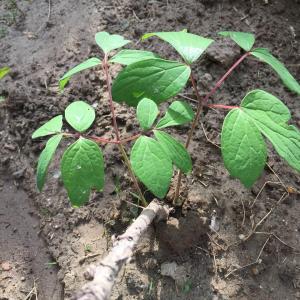








0
0
简单爱:@AF 燕子雪(努力学习) 我是地栽的估计容易活些
AF 燕子雪(努力学习):我家去年都干死了
文章
Miss Chen
2018年04月08日

Daikon radishes have long, fleshy taproots that are used for a variety of purposes. Daikon radishes are generally 2 to 4 inches in diameter and 6 to 20 inches long. The three distinct shapes are spherical, oblong and cylindrical. The uses for Daikon radishes are as varied as the shapes, colors and sizes they come in.

Origins of Daikon Radishes
Also called oilseed radish, Daikon radishes (Raphanus sativus var. oleiferus) comes from two Japanese words: "dia" (meaning large) and "kon" (meaning root). Thought to have originated in the Mediterranian, Daikon radishes were brought to China around 500 B.C. and are still a staple in food dishes across Asia. Most Daikon radishes are white, but they can be yellow, green or black.
Uses for Cover Cropping
Daikon radishes are grown worldwide for cover cropping and food production. Cover cropping is using the natural properties of one or more plant species to help soil, reduce weeds and increase nutrient content for the benefit of the primary crop. Daikon radishes have been found to penetrate tough soils, absorb large amounts of nitrogen and provide a large above-ground foliage cover to suppress weeds. Daikon radishes germinate quickly, grow in cooler temperatures and are often planted in the fall. Left in the ground over winter to decompose, they then release the nitrogen back into the soil for next season's crop.

Culinary Uses
Daikon radishes are the most widely grown vegetable in Japan. Daikon can be eaten raw, fried, grilled or boiled. When eaten raw, Daikon radishes are spicy. They become mild when processed. Daikon radishes are a good source of vitamin C, phosphorus and potassium. Daikon radishes are also low in calories (only about 18 calories per 100g) and are rich in enzymes to help aid in digestion.
When to Harvest
When used as a food crop, Daikon radishes can be harvested approximately 60 days after planting. If used for processing, roots should be allowed to grow to 12 to 14 inches. For fresh market sales, harvest roots at 2 1/2 inches. Tops break off easily during harvesting, so radishes should be harvested by hand. Use a digging fork to gently lift and loosen the soil around the radishes, then gently pull on the tops as close to the ground as possible. If you plant several crops in a row, you can harvest Daikon radishes for several weeks.

Origins of Daikon Radishes
Also called oilseed radish, Daikon radishes (Raphanus sativus var. oleiferus) comes from two Japanese words: "dia" (meaning large) and "kon" (meaning root). Thought to have originated in the Mediterranian, Daikon radishes were brought to China around 500 B.C. and are still a staple in food dishes across Asia. Most Daikon radishes are white, but they can be yellow, green or black.
Uses for Cover Cropping
Daikon radishes are grown worldwide for cover cropping and food production. Cover cropping is using the natural properties of one or more plant species to help soil, reduce weeds and increase nutrient content for the benefit of the primary crop. Daikon radishes have been found to penetrate tough soils, absorb large amounts of nitrogen and provide a large above-ground foliage cover to suppress weeds. Daikon radishes germinate quickly, grow in cooler temperatures and are often planted in the fall. Left in the ground over winter to decompose, they then release the nitrogen back into the soil for next season's crop.

Culinary Uses
Daikon radishes are the most widely grown vegetable in Japan. Daikon can be eaten raw, fried, grilled or boiled. When eaten raw, Daikon radishes are spicy. They become mild when processed. Daikon radishes are a good source of vitamin C, phosphorus and potassium. Daikon radishes are also low in calories (only about 18 calories per 100g) and are rich in enzymes to help aid in digestion.
When to Harvest
When used as a food crop, Daikon radishes can be harvested approximately 60 days after planting. If used for processing, roots should be allowed to grow to 12 to 14 inches. For fresh market sales, harvest roots at 2 1/2 inches. Tops break off easily during harvesting, so radishes should be harvested by hand. Use a digging fork to gently lift and loosen the soil around the radishes, then gently pull on the tops as close to the ground as possible. If you plant several crops in a row, you can harvest Daikon radishes for several weeks.
0
1
文章
Miss Chen
2018年04月06日

Description: This perennial wildflower is 1-4' tall. Initially, evergreen basal leaves are produced, forming a rosette about 4-6" across; these leaves develop during the late fall and persist into the spring. Later, a central stem develops that becomes branched in the upper half. Both the central and lateral stems are terete and evenly pubescent. Along each stem, there are alternate leaves up to 4" long and 2½" across. These leaves are variable in shape: the lower leaves are cordate to ovate-cordate (like the basal leaves), the middle leaves are ovate-cordate to lanceolate, while the upper leaves are linear to short and scale-like. The alternate leaves become smaller in size as they ascend the stems. They are dull medium green, sparsely short-canescent on their upper surfaces, and more densely short-pubescent on their upper surfaces. The margins of the leaves are usually smooth, although some leaves may be sparsely dentate-crenate.

The central stem terminates in a panicle of flowerheads that is about twice as long as it is across; the stronger upper stems often produce smaller panicles of flowerheads. The collective weight of these flowerheads often causes the entire plant to lean partially sideways. Each daisy-like flowerhead is ¾–1¼" across, consisting of 20-35 rays florets and a similar number of disk florets. Depending on the local genotype of the plant, some flowerheads may have up to 50 ray florets, but this is less common. The ray florets of the flowers are usually blue-violet, but sometimes they are white. The disk florets are yellow, but become more orange-red colored with age. At the base of each flowerhead, there are several series of strongly recurved floral bracts. These bracts are linear-lanceolate in shape and usually finely pubescent. The blooming period occurs from late summer into the fall and lasts about 1-2 months. Usually, several flowers are in bloom at the same time. There is no noticeable floral scent. Each disk or ray floret is replaced by a small achene that is narrowly obovoid. At the apex of each achene, there is a small tuft of tawny hairs. These achenes are distributed by the wind. The root system is fibrous and short-rhizomatous. Older plants may produce a small caudex. Vegetative offsets can develop from the rhizomes.

Cultivation: The preference is partial sun, mesic to dry conditions, and soil containing clay-loam or rocky-loam. Decaying organic material is beneficial to growth and helps to retain moisture. Like other woodland asters, this species often leans over to one side when it flowers.
Range & Habitat: The native Many-Rayed Aster is largely restricted to west-central and south-west Illinois, where it is uncommon to occasional (see Distribution Map). Elsewhere in the state, it is absent. This species is endemic to the mid-section of the United States, where it is found primarily in Arkansas, Missouri, and Illinois. Habitats include upland oak woodlands, upland oak savannas, thinly wooded bluffs along major rivers, partially shaded cliffs, rocky ledges, and various kinds of glades (limestone, sandstone, chert, etc.). This aster is fairly conservative ecologically, but it will adapt to minor levels of disturbance and probably benefits from occasional wildfires.
Faunal Associations: The nectar and pollen of the flowers attract a variety of insects, including long-tongued bees, short-tongued bees, Syrphid flies, bee flies, and small- to medium-sized butterflies. A specialist pollinator of asters is the bee Andrena simplex. Many insects feed on various parts of asters (leaves, flowerheads, stems, etc.), including the caterpillars of the butterflies Chlosyne nycteis (Silvery Checkerspot) and Phyciodes tharos (Pearl Crescent); other species are listed in the Moth Table (moths & butterflies) and the Insect Table (primarily aphids, leaf beetles, & plant bugs). The Ruffed Grouse and Wild Turkey feed on the leaves, flowerheads, and seeds of asters (especially those species occurring in woodlands and savannas). Mammals feeding on asters include the White-Tailed Deer (foliage), Cottontail Rabbit (foliage), and White-Footed Mouse (seeds). Asters help to provide cover for wildlife.

Photographic Location: The wildflower garden of the webmaster in Urbana, Illinois.
Comments: There are many aster species in Illinois (over 35), and this is one of the less common species. In many ways, Many-Rayed Aster resembles the more common Symphyotrichum drummondii (Drummond's Aster), but the former has larger flowerheads (at least ¾" across) with strongly recurved floral bracts. In contrast, Drummond's Aster (and many other woodland/savanna asters) has flowerheads about ½–¾" across and straight floral bracts. As the common name suggests, Many-Rayed Aster has abundant ray florets (20-35 or more), while other woodland/savanna asters typically have 10-20 ray florets. I am somewhat partial to Many-Rayed Aster because it is easy to grow, the flowerheads are a little larger in size, and they are usually more showy than the flowerheads of other woodland/savanna asters. A scientific synonym of this species is Aster anomalus, and another common name is Cliff Aster.

The central stem terminates in a panicle of flowerheads that is about twice as long as it is across; the stronger upper stems often produce smaller panicles of flowerheads. The collective weight of these flowerheads often causes the entire plant to lean partially sideways. Each daisy-like flowerhead is ¾–1¼" across, consisting of 20-35 rays florets and a similar number of disk florets. Depending on the local genotype of the plant, some flowerheads may have up to 50 ray florets, but this is less common. The ray florets of the flowers are usually blue-violet, but sometimes they are white. The disk florets are yellow, but become more orange-red colored with age. At the base of each flowerhead, there are several series of strongly recurved floral bracts. These bracts are linear-lanceolate in shape and usually finely pubescent. The blooming period occurs from late summer into the fall and lasts about 1-2 months. Usually, several flowers are in bloom at the same time. There is no noticeable floral scent. Each disk or ray floret is replaced by a small achene that is narrowly obovoid. At the apex of each achene, there is a small tuft of tawny hairs. These achenes are distributed by the wind. The root system is fibrous and short-rhizomatous. Older plants may produce a small caudex. Vegetative offsets can develop from the rhizomes.

Cultivation: The preference is partial sun, mesic to dry conditions, and soil containing clay-loam or rocky-loam. Decaying organic material is beneficial to growth and helps to retain moisture. Like other woodland asters, this species often leans over to one side when it flowers.
Range & Habitat: The native Many-Rayed Aster is largely restricted to west-central and south-west Illinois, where it is uncommon to occasional (see Distribution Map). Elsewhere in the state, it is absent. This species is endemic to the mid-section of the United States, where it is found primarily in Arkansas, Missouri, and Illinois. Habitats include upland oak woodlands, upland oak savannas, thinly wooded bluffs along major rivers, partially shaded cliffs, rocky ledges, and various kinds of glades (limestone, sandstone, chert, etc.). This aster is fairly conservative ecologically, but it will adapt to minor levels of disturbance and probably benefits from occasional wildfires.
Faunal Associations: The nectar and pollen of the flowers attract a variety of insects, including long-tongued bees, short-tongued bees, Syrphid flies, bee flies, and small- to medium-sized butterflies. A specialist pollinator of asters is the bee Andrena simplex. Many insects feed on various parts of asters (leaves, flowerheads, stems, etc.), including the caterpillars of the butterflies Chlosyne nycteis (Silvery Checkerspot) and Phyciodes tharos (Pearl Crescent); other species are listed in the Moth Table (moths & butterflies) and the Insect Table (primarily aphids, leaf beetles, & plant bugs). The Ruffed Grouse and Wild Turkey feed on the leaves, flowerheads, and seeds of asters (especially those species occurring in woodlands and savannas). Mammals feeding on asters include the White-Tailed Deer (foliage), Cottontail Rabbit (foliage), and White-Footed Mouse (seeds). Asters help to provide cover for wildlife.

Photographic Location: The wildflower garden of the webmaster in Urbana, Illinois.
Comments: There are many aster species in Illinois (over 35), and this is one of the less common species. In many ways, Many-Rayed Aster resembles the more common Symphyotrichum drummondii (Drummond's Aster), but the former has larger flowerheads (at least ¾" across) with strongly recurved floral bracts. In contrast, Drummond's Aster (and many other woodland/savanna asters) has flowerheads about ½–¾" across and straight floral bracts. As the common name suggests, Many-Rayed Aster has abundant ray florets (20-35 or more), while other woodland/savanna asters typically have 10-20 ray florets. I am somewhat partial to Many-Rayed Aster because it is easy to grow, the flowerheads are a little larger in size, and they are usually more showy than the flowerheads of other woodland/savanna asters. A scientific synonym of this species is Aster anomalus, and another common name is Cliff Aster.
0
0


